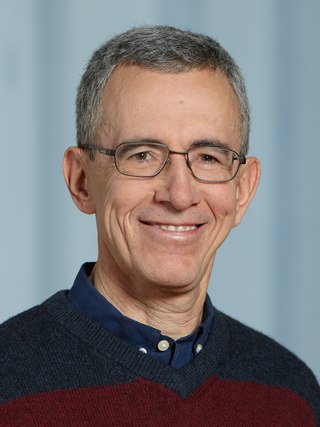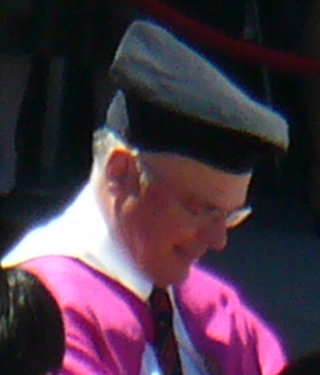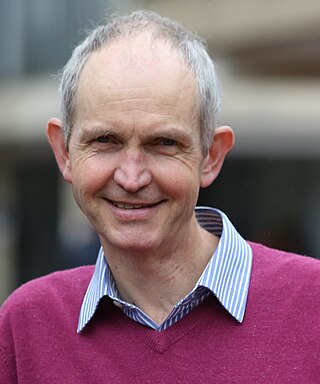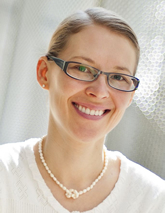Academic work
In 1971, Hall was awarded a National Academy of Sciences Fellowship at NASA Goddard Space Flight Center where he worked on for space-based optical communication systems. He then moved to Avco Everett Research Laboratory in Boston, where he worked on electron beam laser technology and high pulse energy modelocked lasers, laser radar and atmospheric optical propagation.
Hall moved to the Royal Signals and Radar Establishment in 1976 working on lasers and infrared systems, before transferring to the University of Hull in 1979. At Hull he led the UK national project to design and construct the Satellite Laser Ranging Facility at Royal Greenwich Observatory, Herstmonceux. At the same time Hall developed techniques for laser excitation using transverse radiofrequency discharges to produce a range of compact sealed CO2 lasers for medical, industrial and laser radar applications.
Since 1987, Hall has been Professor of Photonics at Heriot-Watt University, Edinburgh, where his research interests have continued in laser device physics and applications. He has been concerned with the design of ultracompact high power waveguide lasers, exploiting concurrent research in RF discharge physics and planar optical waveguides to develop new laser concepts based on 2-D laser power scaling and novel laser resonators. Planar waveguide CO2 lasers are now successful products manufactured by major international companies for applications in industry and medicine. More recently, the planar waveguide 'thin laser' concept has been extended to other gas lasers and to solid state lasers pumped by diode bars. This work, part of a general industrial orientation involving partnership in many industry/university collaborative research projects, has resulted in a series of new commercial laser devices and industrial laser-based systems. He has been involved in the creation of three successful start-up companies producing lasers and laser systems.

Photonics is a branch of optics that involves the application of generation, detection, and manipulation of light in the form of photons through emission, transmission, modulation, signal processing, switching, amplification, and sensing. Photonics is closely related to quantum electronics, where quantum electronics deals with the theoretical part of it while photonics deal with its engineering applications. Though covering all light's technical applications over the whole spectrum, most photonic applications are in the range of visible and near-infrared light. The term photonics developed as an outgrowth of the first practical semiconductor light emitters invented in the early 1960s and optical fibers developed in the 1970s.

Gérard Albert Mourou is a French scientist and pioneer in the field of electrical engineering and lasers. He was awarded a Nobel Prize in Physics in 2018, along with Donna Strickland, for the invention of chirped pulse amplification, a technique later used to create ultrashort-pulse, very high-intensity (petawatt) laser pulses.
An optical waveguide is a physical structure that guides electromagnetic waves in the optical spectrum. Common types of optical waveguides include optical fiber waveguides, transparent dielectric waveguides made of plastic and glass, liquid light guides, and liquid waveguides.
Federico Capasso is an Italian-American applied physicist and is one of the inventors of the quantum cascade laser during his work at Bell Laboratories. He is currently on the faculty of Harvard University.
A photonic integrated circuit (PIC) or integrated optical circuit is a microchip containing two or more photonic components that form a functioning circuit. This technology detects, generates, transports, and processes light. Photonic integrated circuits use photons as opposed to electrons that are used by electronic integrated circuits. The major difference between the two is that a photonic integrated circuit provides functions for information signals imposed on optical wavelengths typically in the visible spectrum or near-infrared (850–1650 nm).

Ataç İmamoğlu is a Turkish-Swiss physicist working on quantum optics and quantum computation. His academic interests are quantum optics, semiconductor physics, and nonlinear optics.

Vladimir (Vlad) M. Shalaev is a Distinguished Professor of Electrical and Computer Engineering and Scientific Director for Nanophotonics at Birck Nanotechnology Center, Purdue University.

Charles H. Henry was an American physicist. He was born in Chicago, Illinois. He received an M.S. degree in physics in 1959 from the University of Chicago, and a Ph.D. degree in physics in 1965 from the University of Illinois, under the direction of Charlie Slichter. In March 2008, he was featured in an article in the Physics Illinois News, a publication of the Physics Department of the University of Illinois.

Michael Hochberg is an American physicist. He’s authored over 100 peer-reviewed journal articles, has founded several companies, and has been an inventor on over 60 patents. Hochberg's research interests include silicon photonics and large-scale photonic integration. He has worked in a number of application areas, including data communications, biosensing, quantum optics, mid-infrared photonics, optical computing, and machine learning. Much of his work in silicon photonics has been the product of a longstanding series of collaborations with Thomas Baehr-Jones.

The Ferdinand-Braun-Institut, Leibniz-Institut für Höchstfrequenztechnik (FBH) is a research institute, which is a member of the Gottfried Wilhelm Leibniz Scientific Community. The institute is located in Berlin at the Wissenschafts- und Wirtschaftsstandort Adlershof (WISTA), its research activity is applied science in the fields of III-V electronics, photonics, integrated quantum technology and III-V technology

Robert Louis Byer is a physicist. He was president of the Optical Society of America in 1994 and of the American Physical Society in 2012.
Anthony J. DeMaria is an American researcher in lasers and their applications, particularly known for his work with picosecond laser pulses.

Ajoy Kumar Ghatak is an Indian physicist and author of physics textbooks.
Thomas Baer is the executive director of the Stanford Photonics Research Center, a consulting professor in the applied physics department and an associate member of the Stem Cell Institute at Stanford University. His current scientific research is focused on developing imaging and biochemical analysis technology for exploring the molecular basis of human developmental biology and neuroscience. He received a B.A. in physics from Lawrence University in 1974, and a Ph.D. in atomic physics from the University of Chicago in 1979, where he studied with Professors Ugo Fano and Isaac Abella. After receiving his Ph.D. he worked with Nobel Laureate John L. Hall at JILA, University of Colorado, performing research on frequency stabilized lasers and ultra-high precision molecular spectroscopy.
Ken-ichi Ueda is a Japanese laser scientist. He published more than 700 papers in international journals.

David A. B. Miller is the W. M. Keck Foundation Professor of Electrical Engineering at Stanford University, where he is also a professor of Applied Physics by courtesy. His research interests include the use of optics in switching, interconnection, communications, computing, and sensing systems, physics and applications of quantum well optics and optoelectronics, and fundamental features and limits for optics and nanophotonics in communications and information processing.

Prof. R K Sinha is the Vice Chancellor of Gautam Buddha University, Greater Noida, Gautam Budh Nagar under Uttar Pradesh Government since January 2022. He was the Director of the CSIR-Central Scientific Instruments Organisation (CSIR-CSIO) Sector-30C, Chandigarh-160 030, India. He has been a Professor - Applied Physics, Dean-Academic [UG] & Chief Coordinator: TIFAC-Center of Relevance and Excellence in Fiber Optics and Optical Communication, Mission REACH Program, Technology Vision-2020, Govt. of India Delhi Technological University Bawana Road, Delhi-110042, India.

Jonathan C. Knight, is a British physicist. He is the Pro Vice-Chancellor (Research) for the University of Bath where he has been Professor in the Department of Physics since 2000, and served as head of department. From 2005 to 2008, he was founding Director of the university's Centre for Photonics and Photonic Materials.
Govind P. Agrawal is an Indian American physicist and a fellow of Optica, Life Fellow of the IEEE, and Distinguished Fellow of the Optical Society of India. He is the recipient of James C. Wyant Professorship of Optics at the Institute of Optics and a professor of physics at the University of Rochester. He is also a Distinguished scientist at the Laboratory for Laser Energetics (LLE) in the University of Rochester. Agrawal has authored and co-authored several highly cited books in the fields of non-linear fiber optics, optical communications, and semiconductor lasers.

Alexandra Boltasseva is Ron And Dotty Garvin Tonjes Distinguished Professor of electrical and computer engineering at Purdue University, and editor-in-chief for The Optical Society's Optical Materials Express journal. Her research focuses on plasmonic metamaterials, manmade composites of metals that use surface plasmons to achieve optical properties not seen in nature.












